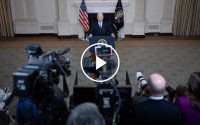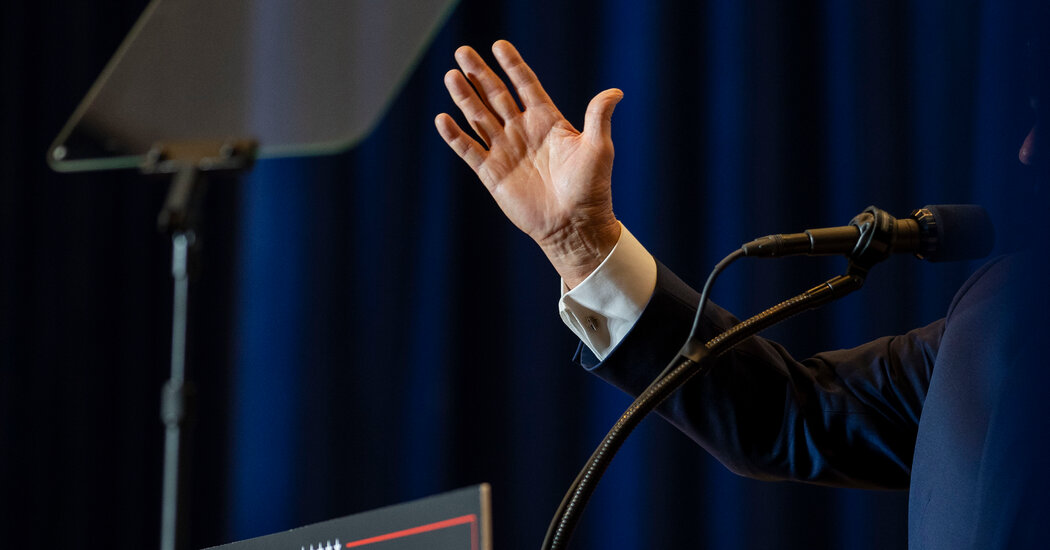Fundraising Deadline for 2024 Presidential Campaigns Arrives: What to Watch
The financial landscape of the 2024 presidential race — the contest’s haves and have-nots, their momentum and desperation — will come into sharper focus on Saturday, the deadline for campaigns to file their latest reports to the Federal Election Commission.
The filings, which detail fund-raising and spending from April 1 through June, will show which campaigns brought in the most hard dollars, or money raised under federal limits that is used to pay for staff, travel, events and advertising. Senate campaigns must also file by the end of Saturday, which means an early glimpse at incumbents’ fund-raising in potentially vulnerable seats.
Crucially, the records will reveal which candidates are struggling to draw donor interest. For example, former Vice President Mike Pence raised just $1.2 million, two aides said on Friday, a strikingly low figure that could signal a difficult road ahead.
The reports will also give a sense of small-dollar support, and which donors are maxing out their contributions to which candidates. And they will show how campaigns are spending their money, which ones have plenty of cash on hand and which ones are in danger of running dry.
“The F.E.C. reports are the M.R.I. scan of a campaign,” said Mike Murphy, a veteran Republican strategist. “It’s the next-best thing to breaking into the headquarters and checking the files.”
But the picture will not be complete. For one thing, super PACs, which can raise unlimited money and play an outsize role in supporting presidential candidates, do not have to file reports on their fund-raising and spending until the end of the month.
The total number of donors to each campaign will not be provided in the filings, either. That figure is a vital measure for Republicans, because the party is requiring presidential candidates to have at least 40,000 unique donors to take part in the first primary debate on Aug. 23.
Saturday will also be the first detailed look at President Biden’s war chest as he slowly ramps up his re-election campaign. His campaign said on Friday that along with the Democratic National Committee and a joint fund-raising committee, it had raised more than $72 million combined for the second quarter.
In the same period in 2019, former President Donald J. Trump and his allies raised a total of $105 million — $54 million for Mr. Trump and his committees, and $51 million for the Republican National Committee. In 2011, former President Barack Obama raised $47 million for his campaign and $38 million for the Democratic National Committee.
Saturday will also show the money taken in by candidates in competitive Senate races in West Virginia, Arizona, Montana, Nevada and Ohio, among other places.
The filings for presidential candidates are pored over by competitors, who want to “get a sense of how they are applying their resources, which will give them a clue to strategies,” Mr. Murphy said. Candidates might look at how much their rivals are spending on ads and polling, for example.
“The most important number is cash on hand, minus debt,” Mr. Murphy said. “You see how much financial firepower they actually have.”
Several Republican presidential campaigns have previewed their fund-raising ahead of the release. Gov. Ron DeSantis of Florida raised $20 million in the second quarter, his campaign said this month. But the filing on Saturday will show what percentage of that amount came from contributions below $200, which is instructive to assessing the strength of his grass-roots support.
Mr. Trump raised more than $35 million in the second quarter, his campaign said. That number, however, is hard to compare with Mr. DeSantis’s because Mr. Trump has raised money through a joint fund-raising committee, which allows him to solicit contributions above the $3,300 individual limit and then transfer funds to his campaign and to his leadership political action committee.
Nikki Haley, the former South Carolina governor and United Nations ambassador, is raising money into a joint fund-raising committee, which transfers funds to her campaign and to a leadership PAC.
Ms. Haley’s three committees together took in $7.3 million in contributions in the second quarter, according to filings shared with The New York Times, of which the campaign itself accounted for $4.3 million.
Mr. Murphy singled out Ms. Haley as a candidate whose total earnings appeared modest, but whose cash on hand had increased from the first quarter of the year — to $9.3 million from $7.9 million across the three committees. “It shows a heartbeat,” he said. Her filings also suggest that her campaign is running a lean operation, with minimal staff, economical travel and no television ads.
The Republican National Committee’s donor threshold for the first debate has shifted the calculus of many campaigns and PACs, which must focus not only on raising money but also on attracting a sufficient number of individual donors. So far, the candidates who say they have met that threshold are Mr. Trump, Mr. DeSantis, Ms. Haley, Senator Tim Scott of South Carolina and former Gov. Chris Christie of New Jersey.
On Wednesday, Mr. Scott’s campaign said he had raised $6.1 million in the second quarter. Mr. Scott entered the race in May with a head start: He had $22 million in hard dollars in his Senate campaign. His presidential campaign said it had $21 million remaining at the end of the quarter.
Another Republican candidate, the wealthy entrepreneur Vivek Ramaswamy, has not released a preview of his fund-raising numbers, but he has said he will spend $100 million of his own money on his bid. Mr. Christie, similarly, has not released his numbers.
On Friday, the campaign of Gov. Doug Burgum of North Dakota, a wealthy former software engineer, filed its quarterly report, showing that he had raised $1.5 million in contributions and that he had lent $10 million to his campaign. He had $3.6 million in cash on hand at the end of the month.
The campaign of Robert F. Kennedy Jr., the environmental lawyer who is challenging Mr. Biden for the Democratic nomination, also filed its report Friday, showing more than $6.3 million in contributions and $4.5 million in cash on hand at the end of June.
Terry Sullivan, a Republican strategist who ran Senator Marco Rubio’s 2016 presidential campaign, said it would be telling which candidates broadcast their total donor numbers.
Another thing to watch is the “burn rate” of each campaign, Mr. Sullivan said — what candidates are spending as a share of what they have taken in, and how much they have left in the bank.
Campaign accounts are vital to candidates because, unlike PACs, the funds are controlled by the campaign. Also unlike PACs, campaigns are protected by federal law that guarantees political candidates the lowest possible rate for broadcast advertising.
Mr. Sullivan said that television advertising was no longer as important as so-called earned media exposure, through events, viral moments and debates. But those often cost money, too: Even on a tight budget, candidates can easily spend a quarter-million dollars a day holding events on the trail, he said.
“Nobody stops running for president because they think their ideas are no longer good enough, or they’re not qualified,” Mr. Sullivan said. “People stop running for president for one reason, and one reason only: It’s because they run out of money.”
With Mr. DeSantis, Mr. Trump and Mr. Scott in the top tier of candidates with the most cash available and Ms. Haley in the next level down, it remains to be seen who will join her in the modest but viable middle.
Republican political observers will watch closely for the filing by former Vice President Mike Pence, who has not announced his fund-raising figures.
He is disliked by many Republican voters and trails far behind Mr. Trump and Mr. DeSantis in national polls — yet he consistently shows up in third, above Ms. Haley and Mr. Scott, and is making an aggressive play for religious conservatives on seemingly friendly terrain in Iowa. How he performs financially could offer a clue to the lasting strength of his campaign.
Reid J. Epstein and Maggie Haberman contributed reporting.


